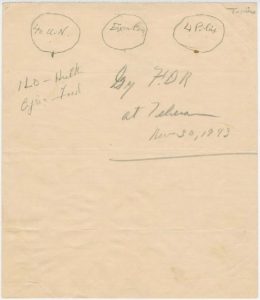
On January 10, 1920, the League of Nations formally comes into being when the Covenant of the League of Nations, ratified by 42 nations in 1919, takes effect. However, at some point the League became ineffective when it failed to act against the Japanese invasion of Manchuria as in February 1933, 40 nations voted for Japan to withdraw from Manchuria but Japan voted against it and walked out of the League instead of withdrawing from Manchuria. It also failed against the Second Italo-Ethiopian War despite trying to talk to Benito Mussolini as he used the time to send an army to Africa, so the League had a plan for Mussolini to just take a part of Ethiopia, but he ignored the League and invaded Ethiopia, the League tried putting sanctions on Italy, but Italy had already conquered Ethiopia and the League had failed. After Italy conquered Ethiopia, Italy and other nations left the league. But all of them realized that it had failed and they began to re-arm as fast as possible. During 1938, Britain and France tried negotiating directly with Hitler but this failed in 1939 when Hitler invaded Czechoslovakia. When war broke out in 1939, the League closed down and its headquarters in Geneva remained empty throughout the war.
1942 “Declaration of United Nations” by the Allies of World War II:
The earliest concrete plan for a new world organization began under the aegis of the U.S. State Department in 1939. The text of the “Declaration by United Nations” was drafted at the White House on December 29, 1941, by President Franklin D. Roosevelt, Prime Minister Winston Churchill, and Roosevelt aide Harry Hopkins.

It incorporated Soviet suggestions, but left no role for France. “Four Policemen” was coined to refer to four major Allied countries, United States, United Kingdom, Soviet Union, and Republic of China, which emerged in the Declaration by United Nations. Roosevelt first coined the term United Nations to describe the Allied countries. “On New Year’s Day 1942, President Roosevelt, Prime Minister Churchill, Maxim Litvinov, of the USSR, and T. V. Soong, of China, signed a short document which later came to be known as the United Nations Declaration and the next day the representatives of twenty-two other nations added their signatures.” The term United Nations was first officially used when 26 governments signed this Declaration. One major change from the Atlantic Charter was the addition of a provision for religious freedom, which Stalin approved after Roosevelt insisted. By 1 March 1945, 21 additional states had signed.
A JOINT DECLARATION BY THE UNITED STATES OF AMERICA, THE UNITED KINGDOM OF GREAT BRITAIN AND NORTHERN IRELAND, THE UNION OF SOVIET SOCIALIST REPUBLICS, CHINA, AUSTRALIA, BELGIUM, CANADA, COSTA RICA, CUBA, CZECHOSLOVAKIA, DOMINICAN REPUBLIC, EL SALVADOR, GREECE, GUATEMALA, HAITI, HONDURAS, INDIA, LUXEMBOURG, NETHERLANDS, NEW ZEALAND, NICARAGUA, NORWAY, PANAMA, POLAND, SOUTH AFRICA, YUGOSLAVIA
The Governments signatory hereto,
Having subscribed to a common program of purposes and principles embodied in the Joint Declaration of the President of the United States of America and the Prime Minister of Great Britain dated August 14, 1941, known as the Atlantic Charter,
